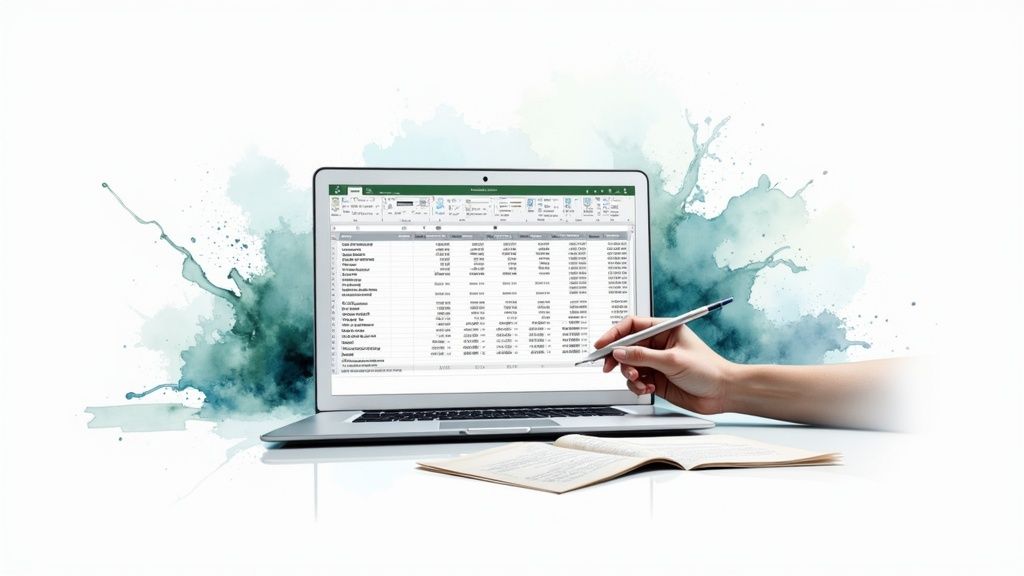Organize Your Finances with Easy Templates
Want to keep track of your money with ease? A basic financial template can help you do that. Here are seven tools that make handling income, spending, and cash flow easy. Choose the best simple financial template for your needs, whether you like using spreadsheets or software. Pick the right tool and make wise money decisions.
1. Microsoft Excel Financial Template
Microsoft Excel has ready-to-use templates for your finances. These are perfect for personal use or small businesses. They include balance sheets, income statements, and cash flow statements. The templates come with formulas and are already formatted. You can change them to suit your needs. Excel does the math for you, making it a good choice for a simple financial template.
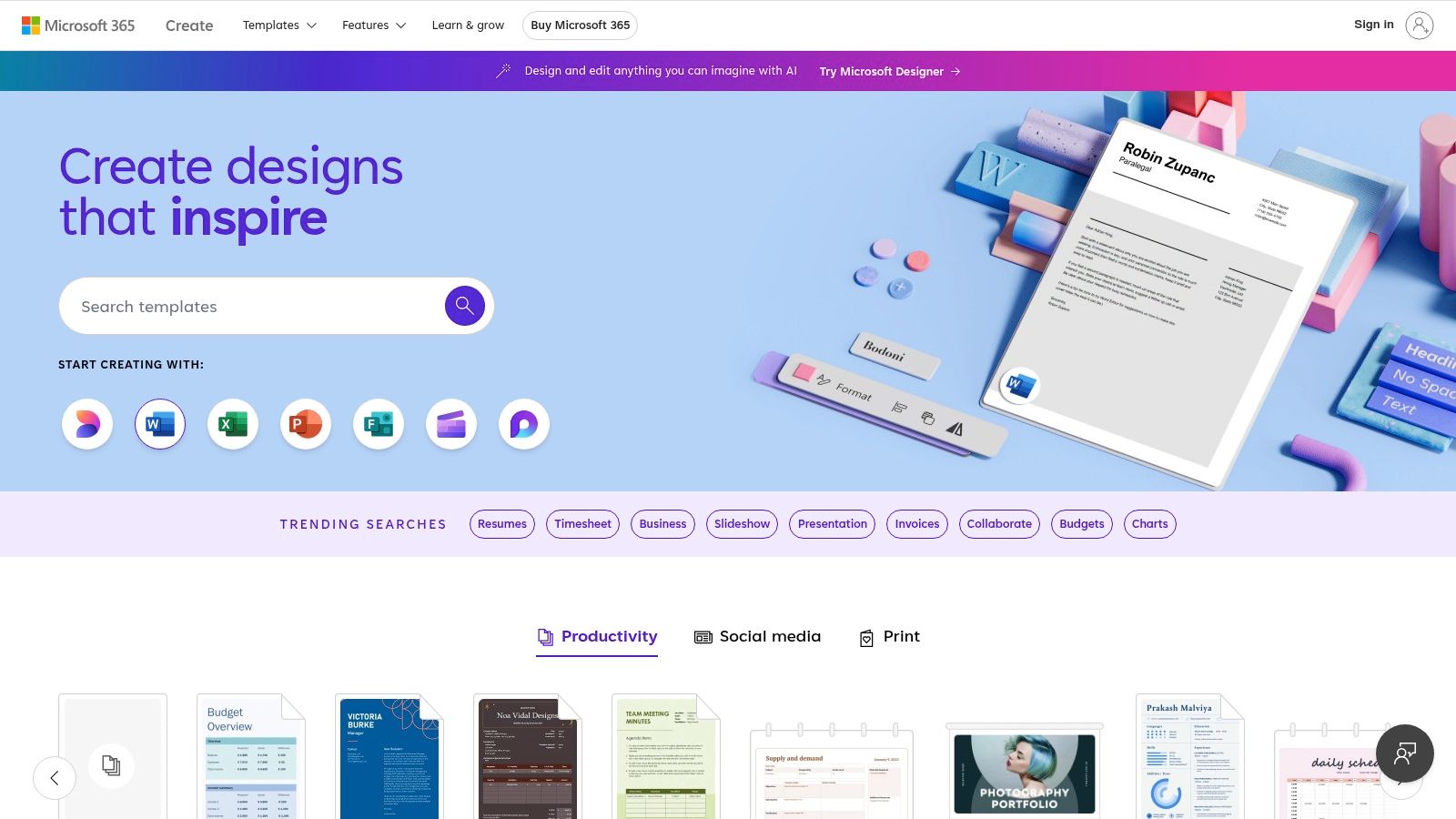
Whether you’re new to investing, an experienced trader, a financial analyst, an advisor, or just someone who enjoys the market, Excel can assist you. Use it to monitor your income and expenses. Small business owners can manage their finances with it. Even seasoned analysts find it helpful for quick calculations and reports.
Main Features:
Automatic Math: Formulas handle calculations.
Changeable: Adjust the look and setup to suit you.
Options: Includes balance sheets, income reports, and cash flow charts.
Compatible: Works with all Excel versions.
Easy Data Movement: Move data in and out simply.
Advantages:
Widely Available: Many people already have Excel.
Versatile: Can be changed a lot.
Free with Office: No extra cost if you have Office.
Integrates with Other Microsoft Tools: Easy to share.
Disadvantages:
Requires Skills: Need some knowledge for complex changes.
Manual Updates: Numbers must be updated by hand.
Limited Sharing in Basic Versions: Harder for teamwork.
May Not Suit Big Companies: Could be too basic.
Steps to Start:
Open Excel.
Search for “financial statement templates.”
Pick one.
Enter your numbers.
Cost: Free with Microsoft Office. Otherwise, an Office subscription is needed.
Excel is a good choice for simple financial statements. It’s easy if you know the basics. Templates are useful and can be adjusted. While it may not be perfect for big businesses, it’s great for individuals and small companies. It’s a solid option for a simple financial template due to its availability and flexibility.
2. Google Sheets Financial Statement Template
Looking for an easy financial statement template? Google Sheets is ready to help. It has free templates for income, balance, and cash flow statements. These are basic and easy to use. Since it’s online, you can work with others at the same time. Plus, you can open your work from any device with internet access. This is perfect for small businesses and teams working from different places. This simple option is a good pick for a financial statement template.
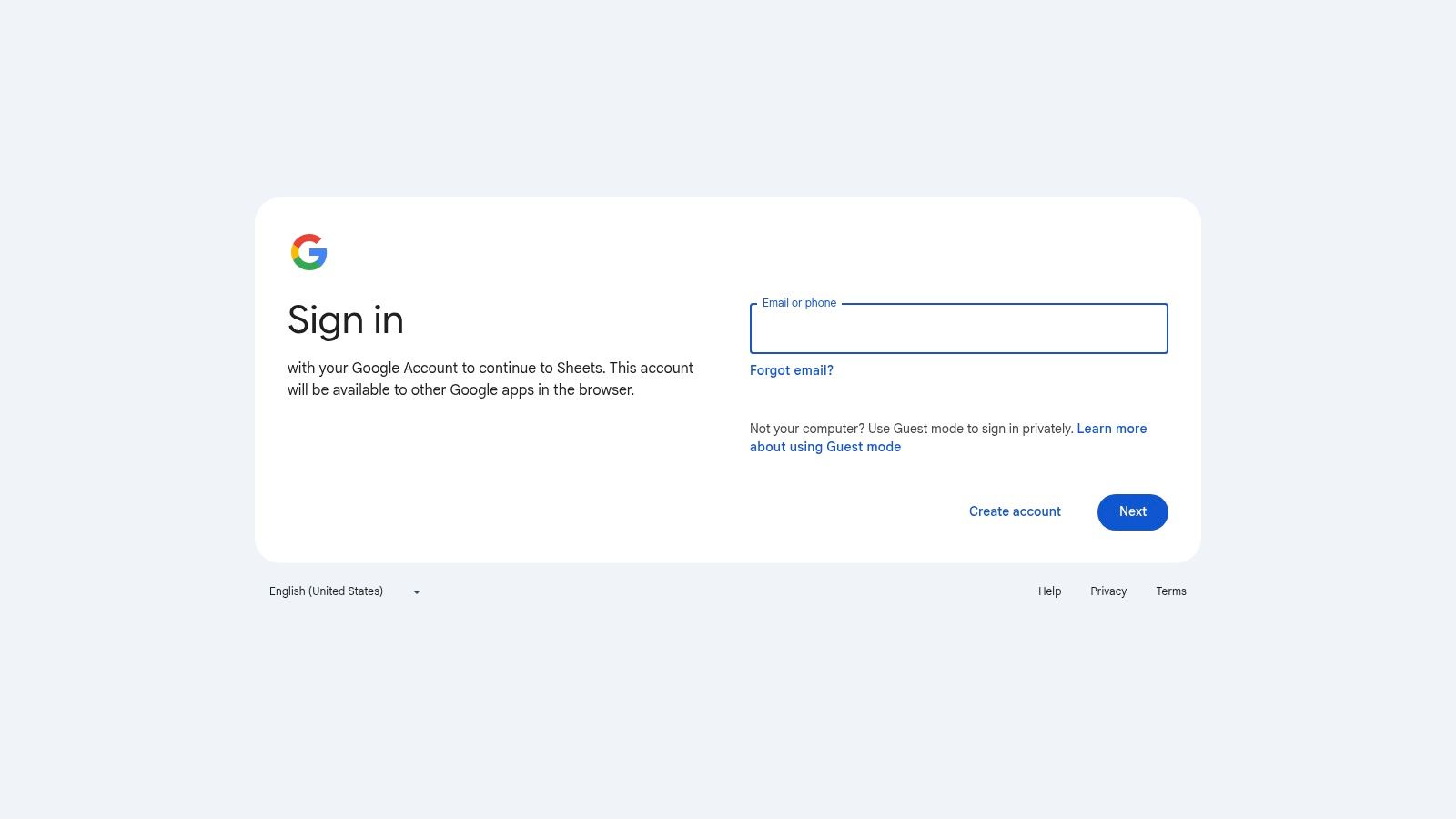
Google Sheets works with other Google tools. It’s easy to share and handle your financial data. It saves your work automatically and keeps older versions. To use it, you need a Google account, but it’s free. It’s a good choice for a simple financial statement template.
Main Features:
Work together in real-time.
Free if you have a Google account.
Use it on any device with internet.
Saves work automatically and keeps old versions.
Connects with other Google tools.
Advantages:
No cost.
Great for team projects.
Access from anywhere with internet.
Google updates it.
Disadvantages:
Not as strong as accounting software.
Needs internet to work well.
Can slow down with lots of data.
Fewer features than Excel.
How to Start:
Go to Google Sheets.
Find the “Template Gallery.”
Pick the financial statement template you want.
Comparison:
Excel has more features but lacks real-time teamwork like Google Sheets. Accounting software is stronger but usually costs money. Google Sheets offers simplicity and ease of use. It’s a great free choice for a simple financial statement template.
Website: https://docs.google.com/spreadsheets/u/0/
This basic template is a good start. It’s free, easy, and good for teamwork. While it doesn’t have all the advanced features, its simplicity works for many users. Whether you’re new to investing or have experience, Google Sheets can help manage your finances.
3. QuickBooks Financial Statement Templates
QuickBooks has easy-to-use financial statement templates. If you’re already using QuickBooks, these templates are handy. They simplify making financial reports. This makes them a great choice.
Want to check your business’s financial status? QuickBooks gets details from your account. This makes the reports accurate. You can view important reports like:
Balance Sheet: Shows what you own and owe.
Profit & Loss Statement: Shows how much you earned or lost.
Cash Flow Statement: Tracks money in and out.
These reports look neat. They’re ready to share. Plus, they update instantly. So, you always have the latest figures. Perfect for quick reviews or important meetings.
Key Features:
Automatic Data: QuickBooks fills reports for you.
Professional Look: Ready for presentations.
Real-Time Updates: See changes as they occur.
Easy Export: Save as PDFs or Excel files.
Customizable: Add your logo and details.
Pros:
Works well with QuickBooks data.
Fewer mistakes since you don’t type numbers.
Reports match current accounting standards.
Look good for meetings.
Cons:
You need to pay for QuickBooks.
Less flexible than creating your own spreadsheets.
Takes time to learn.
Extra cost with QuickBooks subscription.
Who should use this?
QuickBooks templates are ideal for small and medium businesses using QuickBooks. They save time and cut errors. Beginners find them easy to use. Experts like them too. If you need very detailed reports, you might need a different tool.
Getting Started:
Using QuickBooks templates is simple. Open QuickBooks. Go to the reports section. Pick the report you want. QuickBooks makes it for you. You can customize it if needed.
Is it worth it?
If you use QuickBooks, these templates make getting financial statements easy. They save time and effort. The price is part of your subscription. If you don’t have QuickBooks yet, the cost might not be worth it just for templates. You might want to look at other options first.
4. SCORE Financial Statement Templates
Looking for a simple financial statement template? SCORE offers a great option. SCORE helps small businesses. They offer free templates for key financial statements. These include income statements, balance sheets, and cash flow projections. These simple financial statement templates are easy to use, even if you’re new to finance.
SCORE’s templates are designed with small business owners in mind. They include helpful guides and explanations. This makes understanding financial reports easier. The templates use Excel. This lets you change them to fit your needs. They follow basic accounting rules and are updated regularly.
Why SCORE’s Templates are Great:
Free: You don’t have to pay anything to use them.
Simple: They’re easy to understand, even without a finance background.
Helpful Advice: They offer practical business tips.
Expert Created: Business mentors with real-world experience made them.
Things to Consider:
Basic Design: They might not look as fancy as paid templates.
Not Industry Specific: You might need to adjust them for your specific industry.
Manual Entry: You’ll need to enter your data by hand.
Less Detail: They offer less detail than templates designed for bigger businesses.
Who should use SCORE’s templates?
These simple financial statement templates are a good fit for startups and small business owners. They’re especially helpful if you’re new to managing finances. They’re also great for beginners who want to learn more about financial statements. Experienced traders or financial analysts might need more advanced tools.
How to Use SCORE’s Templates:
Go to the SCORE website: https://www.score.org/resource/business-plan-financial-projections-template
Download the templates you need.
Open the template in Excel.
Enter your business’s financial information.
Use the guides and explanations to understand the reports.
SCORE’s simple financial statement templates are a valuable tool. They offer an easy and free way to manage your business finances. They deserve a spot on this list because they make financial reporting accessible to everyone.
5. Template.net Financial Statement Pack
Looking for an easy financial statement template? Check out Template.net’s big pack. It has templates for many reports, like balance sheets, income statements, and cash flow statements. There are also special reports for certain industries, making it a great choice for different business needs.
One big plus is the variety of formats. You can get templates in Excel, Word, Google Docs, or PDF. This is handy if you use different software. Want a fresh look? The templates are professional and ready to print or use online. New templates are added often, too.
This pack is good for all kinds of users. Beginners can quickly find a basic template. Experts will appreciate the range of styles. It suits both small and large businesses, and there’s something for every industry.
Pros:
Many styles and formats.
One purchase gives many templates.
Looks professional and easy to use.
Fits different business sizes and types.
Cons:
Requires a subscription for full access.
Some templates need adjustments.
Not linked to accounting software.
Quality may vary.
While you need a subscription for full access, it’s worth it for the variety and ease. You get many options in one place, saving time and effort. You can find a simple template that meets your needs.
Setup Tips:
Visit the Template.net website (https://www.template.net/business/financial-statements/).
Browse the templates.
Pick the one that suits you best.
Download it in your chosen format.
Enter your financial data.
This pack is a smart choice if you need different financial statements. The various formats and neat designs make it a useful tool. Just keep in mind the subscription and the need for some tweaks.
6. Xero Financial Statement Templates
Need a simple financial statement template? Xero can help. It’s online accounting software with built-in templates. These templates create key reports like income statements, balance sheets, and cash flow statements. They pull data directly from your Xero account. This means your reports stay up-to-date as your business changes. No more manual updates!
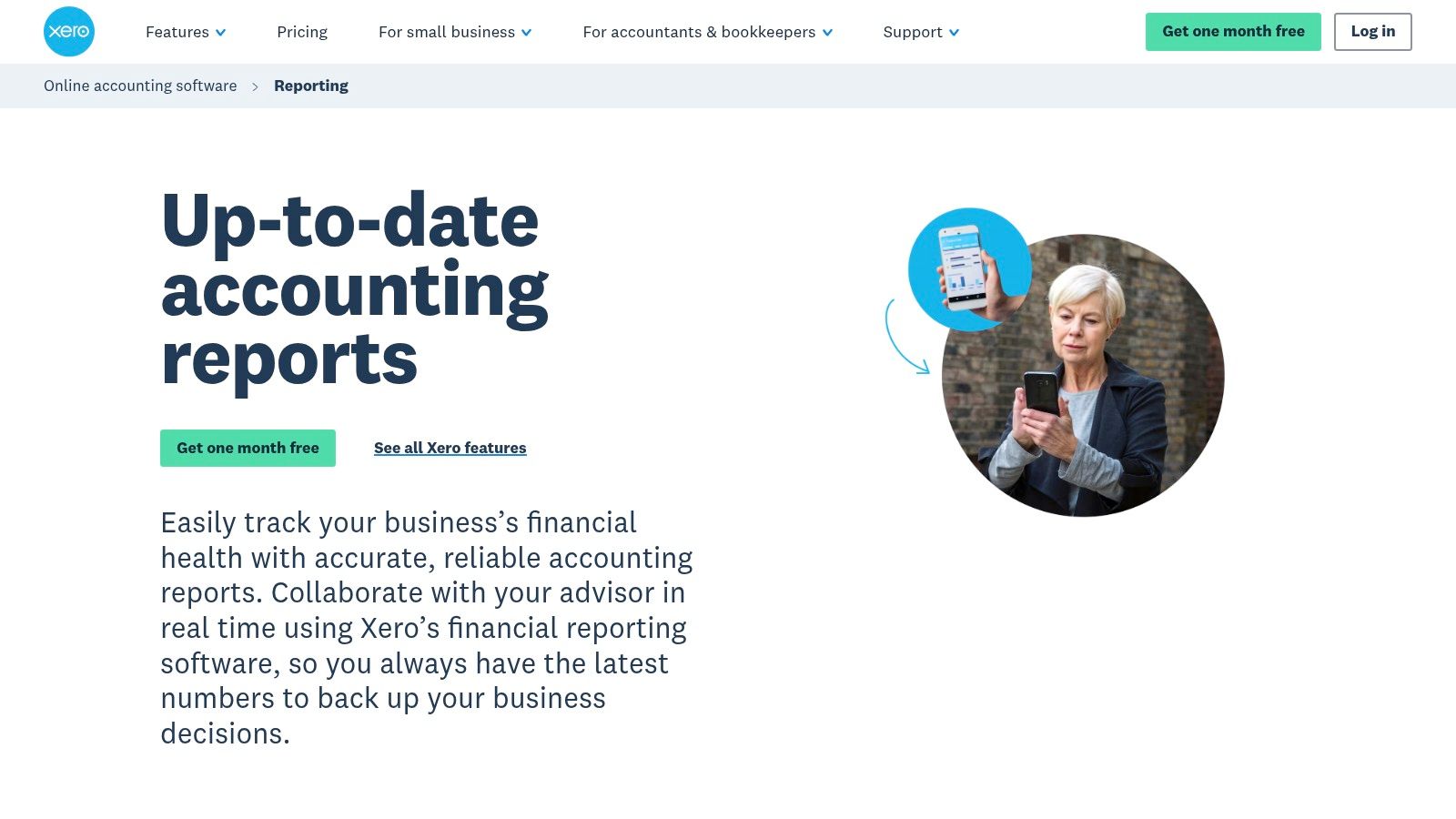
Xero simplifies tracking your finances. You can change reports and add your company logo. It’s great for both beginners and experts. Investors, traders, analysts, and advisors can all benefit from using Xero. Even tech-savvy enthusiasts will find it handy.
Xero stands out by connecting your accounting data to your reports. This saves time and cuts down on mistakes. It’s like having a robot bookkeeper! You can check your data online, anytime. Xero also takes care of security and updates.
Main Features:
Connects directly to your Xero data
Customizable reports and branding
Updates in real-time
Supports various currencies
Export to PDF or Excel
Pros of Xero:
No need to enter data manually
Access from anywhere
Automatic updates
Safe and secure
Cons of Xero:
Requires a Xero subscription (pricing varies)
Works best with Xero
Some features need accounting skills
Might be too much for very small businesses
How to Start with Xero:
Sign up for a Xero account.
Enter your business info.
Pick the report you need.
Customize if you like.
Export or print.
Compared to Other Tools: Other tools may offer simple templates. Xero’s connection to its accounting software is a big plus. It’s a strong choice for those already using Xero. If you’re not using Xero, other easy (and often free) templates might be better.
This tool is a good pick because it makes financial reporting simple. It’s ideal for anyone needing clear and accurate financial statements. Learn more on Xero’s website: https://www.xero.com/features-and-tools/accounting-software/financial-reporting/
7. CFI Financial Statement Templates
The Corporate Finance Institute (CFI) provides useful templates for financial statements. These templates were made by finance and accounting experts. They follow good practices for financial modeling. The templates include income statements, balance sheets, cash flow statements, and financial ratios. They are perfect for financial analysts, investment bankers, and finance professionals who need strong reporting tools. Although “simple financial statement template” may sound basic, CFI offers a solid base for deep financial analysis.
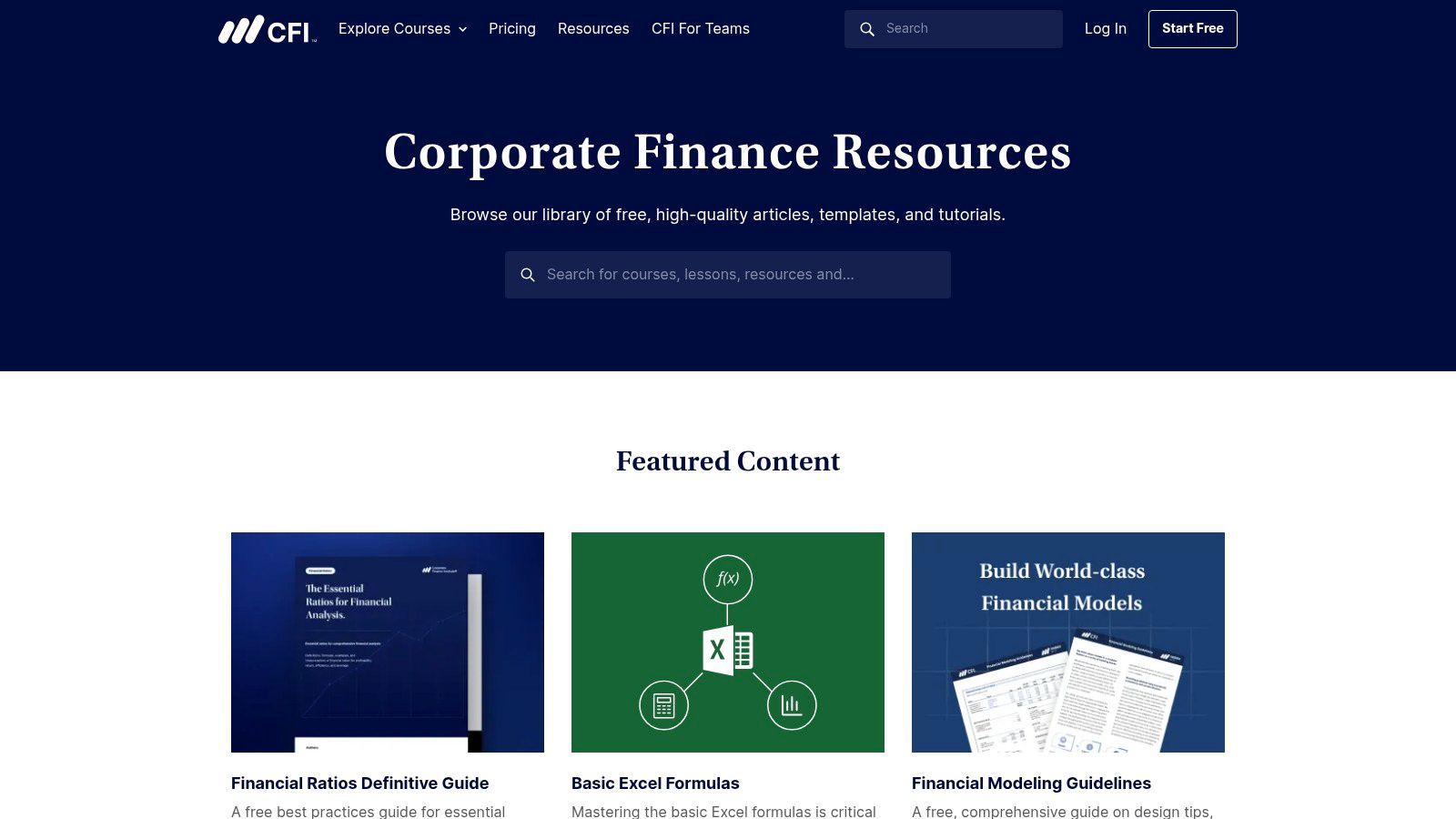
CFI templates are more advanced than basic ones. They’re perfect for investor presentations. You can use them to learn about financial modeling. They look neat and are easy to follow. If you need to present to investors, these templates work well. They help you show your financial data clearly.
CFI offers different templates. Some are free, others cost money. The website doesn’t show prices directly. You need to ask CFI for more info. You’ll need some knowledge of spreadsheets to use these templates. They are made in programs like Excel. If you’re new to spreadsheets, they might be hard at first. Small businesses might find them too tricky. Simpler tools might suit them better.
Features:
Advanced tools for financial modeling
Created by finance and accounting experts
Includes financial ratio analysis
Professional look for investors
Clear instructions
Pros:
High-quality templates
Better than basic ones
Great for investors
Helps you learn finance
Cons:
Need some finance knowledge
Harder to learn than basic templates
Too complex for small businesses
Some cost money
These templates are a great choice if you need advanced tools. They are perfect for financial analysis and investor presentations. If you’re a beginner, a simpler template might be a better start. While not just a “simple financial statement template,” its advanced features make it a helpful resource for serious financial work. You can find these useful templates at https://corporatefinanceinstitute.com/resources/templates/.
Top 7 Financial Statement Template Comparison
|
Template |
Core Features/Characteristics |
User Experience / Quality ★★★★☆ |
Value Proposition 💰 |
Target Audience 👥 |
Unique Selling Points ✨ |
|---|---|---|---|---|---|
|
Microsoft Excel Financial Statement |
Pre-built formulas, customizable, multi-statement types |
Familiar interface, highly customizable |
Included with MS Office 🤑 |
Small businesses, Excel users |
Powerful calculations, strong MS integration 🏆 |
|
Google Sheets Financial Statement |
Cloud-based, real-time collaboration, free |
Easy to use, accessible anywhere |
Free with Google account 💰 |
Small teams, remote workers |
Real-time collaboration, auto-saving ✨ |
|
QuickBooks Financial Statement |
Auto data from QuickBooks, professional layout |
Accurate, time-saving automation |
QuickBooks subscription required 💰 |
SMBs using QuickBooks |
Seamless accounting integration, professional look 🏆 |
|
SCORE Financial Statement |
Simple, educational, Excel format |
User-friendly, guidance notes |
Completely free 💰 |
Small businesses, startups |
Educational focus, mentor-backed templates ✨ |
|
Template.net Financial Statement |
Multiple formats, industry-specific, professional design |
Wide variety, modern layouts |
Subscription-based 💰 |
Various business sizes and industries |
Multi-format bundle, industry templates ✨ |
|
Xero Financial Statement |
Integrates with Xero, real-time updates, multi-currency support |
Cloud-based, secure, auto updates |
Xero subscription required 💰 |
Xero users, mid-sized businesses |
Multi-currency, customization, cloud access ✨ |
|
Corporate Finance Institute (CFI) |
Advanced modeling, ratio analysis, professional formatting |
High sophistication, analyst-grade |
Some premium templates cost 💰 |
Financial analysts, corporate finance pros |
Advanced financial modeling, detailed analysis 🏆 |
Choose the Right Template for Your Financial Goals
This article looked at seven useful tools for making simple financial statement templates. Each one has different features. Some are easy spreadsheets. Others are part of bigger accounting programs. Whether you use Excel, Google Sheets, or tools like QuickBooks or Xero, you can find what suits you best.
What’s important to remember? A good template helps you keep track of your money. It makes reporting simple. It also helps you make smart choices. The right template depends on your needs. A small business owner might like a basic Excel template. A financial analyst might prefer specialized software.
When making your financial statements, think about form design tips to ensure they are clear and easy to use, leading to better financial decisions. These tips from BuildForm for 2025 will make your forms simple to read and use. Consider who will read the statement. Make sure it’s easy to find important info.
Finding the right simple financial statement template is a big step toward better money management. Now you have what you need to manage your finances! Want to go further in financial analysis? Check out Stock Decisions for great stock analysis tools that fit well with your financial data to guide your investment choices.
